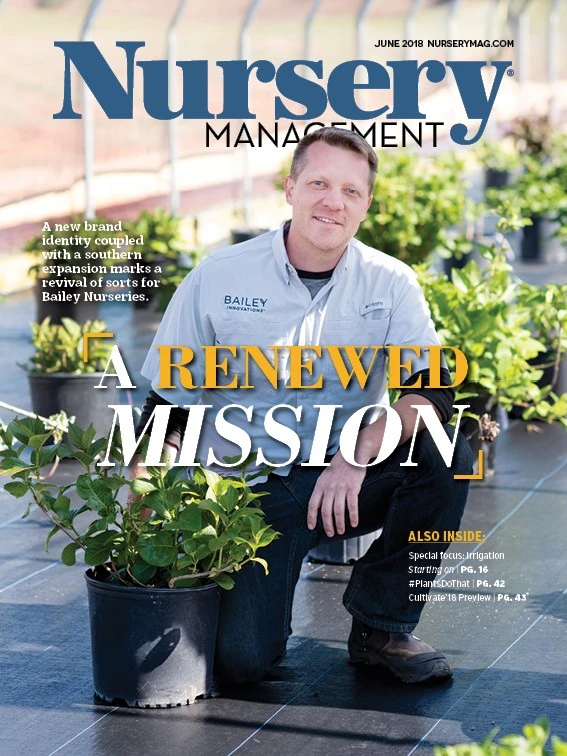
Neil Marek has been around a nursery his whole life and his passion for the industry runs deep. As the general manager of Magnolia Gardens Nursery’s tissue culture division, Marek works to bring unique genetics to the ornamental and agricultural markets, and now looks to share the value of his experiences and knowledge of best management practices, the practical uses of drone technology and unique insight into the relationship between people and process with others who might benefit and gain value from his expertise. He will be discussing the topic “Stay on Track: Working Smarter with Productivity Metrics” at Cultivate`18.
NM: What exactly are productivity metrics?Marek: Productivity metrics are a way to measure the output of any process, how effective your process is running and also how effective the people in the process are working through it. It is a simple system of measurement for the effectiveness of your process and personnel. These measurements can best be used to keep both

NM: How do you measure worker productivity; what metrics do you use? Marek: What particular jobs or processes are measured in an operation will differ from business to business, but the basic principles will be similar throughout. For many nursery operations these might be planting, moving or spacing plants, trimming, or loading. If you start with these several key tasks it will be possible to track a large amount of your labor usage right from the start. As you get comfortable with the tracking, you can look for more tasks to track. You must first make a few decisions to keep it fair and usable over time. Say, when looking at the trimming job, you must decide if you will also include the time it takes to clean up the area and take the trimmings to the dump. However you decide to record it, you must do it the same way every time.
NM: How does one arrive at these measuring sticks? Marek: After figuring out which jobs will be monitored and which aspects of the job will be measured, you can record your baseline measurements. There will already exist some institutional knowledge or expectation as to what the measurements should be, but it is important to begin by just monitoring and refining your collection process in the beginning before you start setting goals. Once you have collected a good baseline of data, you can begin setting goals for your team members.
The beauty of measuring these processes is that it is incredibly flexible and can be applied to any business large or small, and can be customized to fit any environment or operation.
NM: Is this an often overlooked area? Marek: Unfortunately, this incredibly simple and powerful process is overlooked in too many operations. I recently gave a talk on best management practices at a production technology conference. There were about 70 managers and business owners in the audience, and I asked who used daily metrics tracking. I was expecting about half of the audience to raise their hands, but to my
NM: How can understanding productivity metrics help a nursery be more efficient and enhance the bottom line? Marek: Productivity metrics tracking can be a major contributor to the bottom line. These metrics should be used from the bottom to the top of the operation, on the front lines to ensure that employees are staying productive, even when there is no supervision available, and at the top of the operation for effective labor plan management.
Want to go? “Stay on Track: Working Smarter with Productivity Metrics” Monday, July 16 | 10:00 - 10:20 a.m. Knowledge Center

Explore the June 2018 Issue
Check out more from this issue and find your next story to read.
Latest from Nursery Management
- John Ruter shares UGA's latest woody and herbaceous ornamental plant breeding projects
- Conor Foy joins EHR's national sales team
- Pantone announces its 2026 Color of the Year
- Syngenta granted federal registration for Trefinti nematicide/fungicide in ornamental market
- Get to know Kayela Aeppli
- HILA 2025 video highlights: John Gaydos of Proven Winners
- Q&A with Justin Bartlett
- Be the best choice





